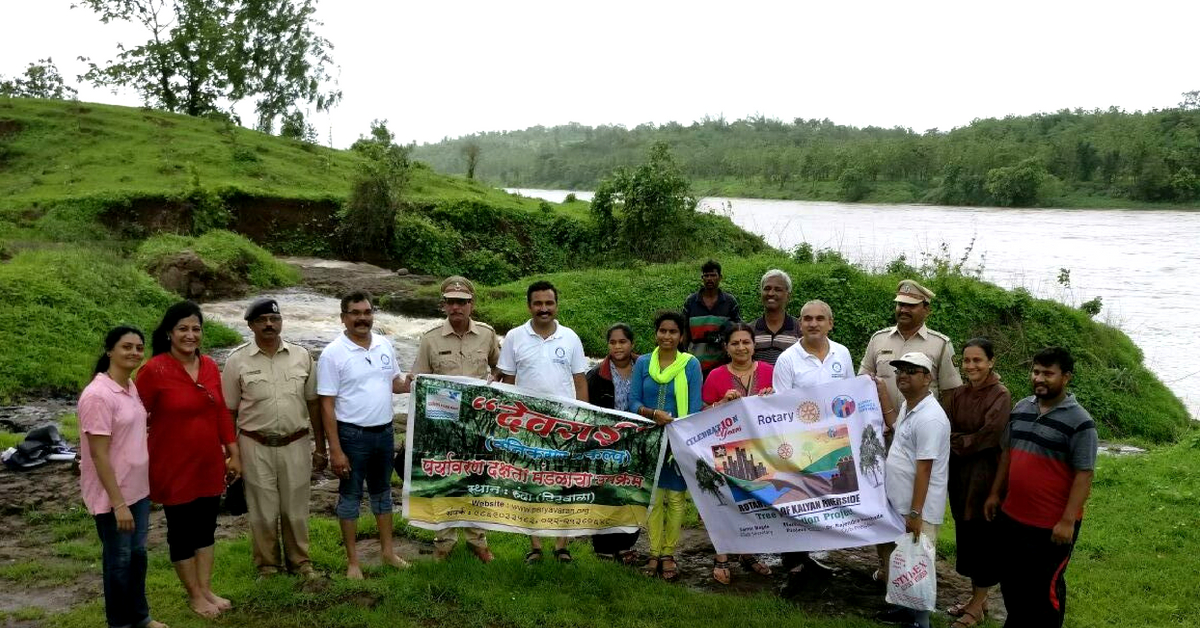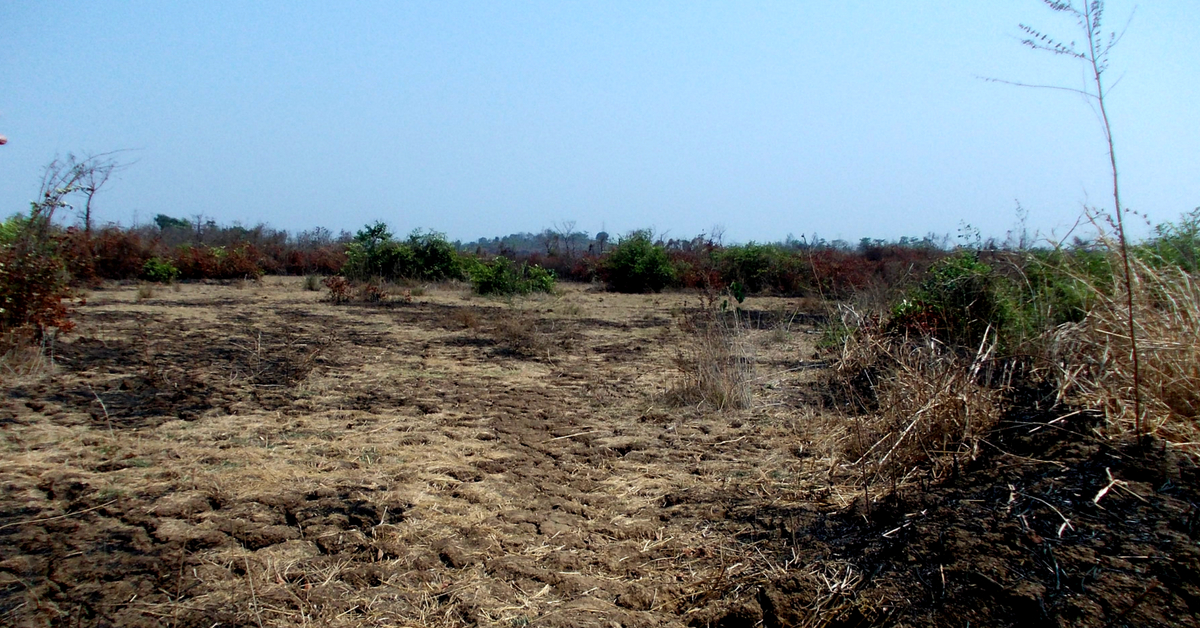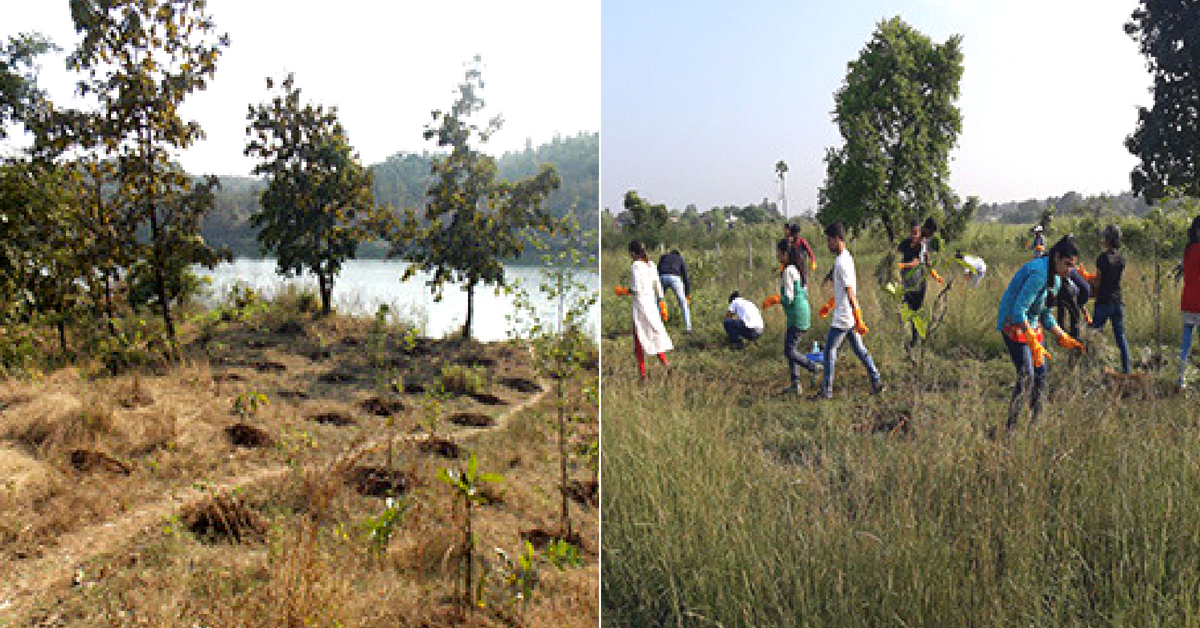Barren Land in Thane Transformed to Lush 19 Hectare Forest in Less Than a Year! Here’s How.
Over the past one year, the volunteers have planted about 8000 saplings on the once barren hill. They even took over the nurturing of plants and reported a survival rate of 98 percent!

Once upon a time, a plot of land measuring 19-hectares which adjoins the Kalu river in the Runde area of Titwala, Thane, was brimming with wildlife. A forested area and an oxygen lung, the area lost all of this to high pollution levels, deforestation and soil erosion.
To optimise oxygen levels and ensure the presence of an oxygen lung in the midst of a thriving city, the forest department decided to bring the land under a tri-party agreement and hand it over to concerned citizens. This way, a large number of people could work towards the revival of the barren land in Titwala.
The Paryavaran Dakshata Mandal, an NGO in Thane, is part of this agreement.
Volunteers from the NGO took charge of the land in January 2017.
They began with conducting thorough research of the soil, water and the kind of fauna that would thrive in the weather conditions there.

Sangita Joshi, who works with the NGO, told the Times of India, “When we started the project, our main aim was to bring back the greenery this area once had. We began by studying the soil, water and other aspects of the land. To ensure the project’s success, we had to plant saplings which we knew would survive.”
The volunteers acquired two-year-old saplings which they had nurtured in their own homes and replanted them in Titwala. Ensuring a high probability of survival of plants was crucial.
Over the past one year, the volunteers have planted about 8000 saplings on the once barren hill. They even took over the nurturing of plants and reported a survival rate of 98 percent!
Needless to say, the land is a thriving forest land once again, and birds, insects and other animals have slowly started making a comeback to Titwala.

KD Thakare, conservator of forest (social forestry) spoke to TOI about the success of the tri-party agreement of forest revival.
“We have numerous such tri-party projects with non-governmental groups where they are given a piece of the forest land to revive. Less than a year after this project started, the NGO has managed to revive the area’s lost green cover. The greenery has also started attracting birds, insects and fauna. It is becoming a complete eco-system once again,” he said.
You may also like: These Mumbai Youngsters Help 123 Societies and 291 Restaurants Manage Waste!
The efforts of the forest department and the NGO are certainly an encouraging way towards a greener future. It won’t be long till Titwala becomes a self-sustaining eco-system that no longer needs to be looked after by humans. Perhaps then we can direct our efforts to other such barren lands which have lost their forest cover due to human interference.
(Edited by Gayatri Mishra)
Featured image courtesy: Paryavaran Dakshata Mandal.
Like this story? Or have something to share?
Write to us: [email protected]
Connect with us on Facebook and Twitter.
NEW: Click here to get positive news on WhatsApp!
If you found our stories insightful, informative, or even just enjoyable, we invite you to consider making a voluntary payment to support the work we do at The Better India. Your contribution helps us continue producing quality content that educates, inspires, and drives positive change.
Choose one of the payment options below for your contribution-
By paying for the stories you value, you directly contribute to sustaining our efforts focused on making a difference in the world. Together, let’s ensure that impactful stories continue to be told and shared, enriching lives and communities alike.
Thank you for your support. Here are some frequently asked questions you might find helpful to know why you are contributing?


This story made me
-
97
-
121
-
89
-
167











